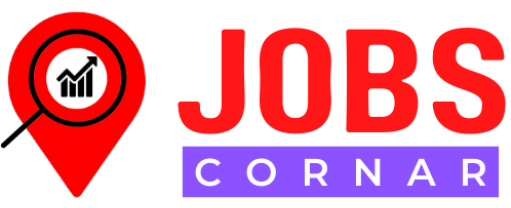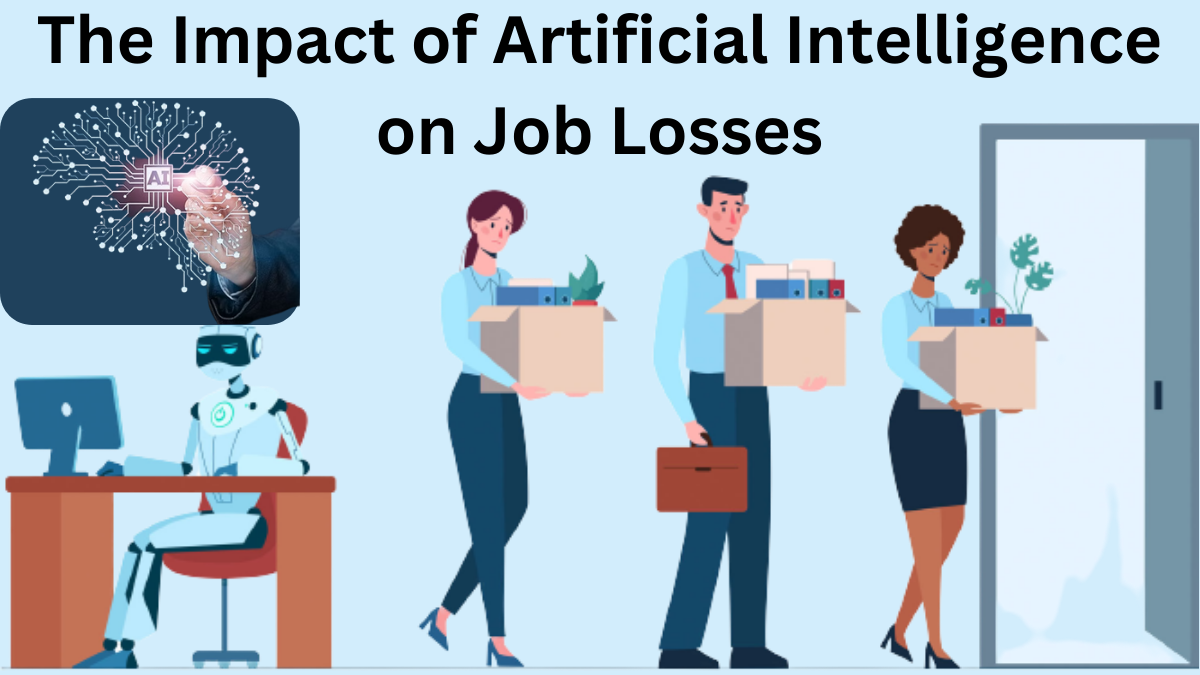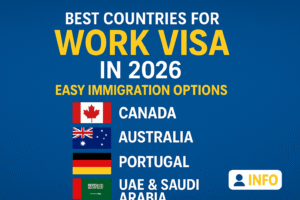Latest The Impact of Artificial Intelligence on Job Losses. Examining Global Disruptions and the USA’s Workforce Transformation.
Introduction:
Artificial Intelligence (AI) has transformed industries and revolutionized the way we live and work. While it has brought numerous advancements, concerns about job displacement have also emerged. In this comprehensive blog post, we will delve into the impact of AI on employment, with a specific focus on the thousands of job losses experienced worldwide, particularly in the United States. By analyzing relevant facts, figures, case studies, and industry-specific examples, we aim to gain a deep understanding of this complex issue. Additionally, we will explore the opportunities and challenges arising from the integration of AI in the workforce.
Chapter 1: AI’s Global Disruption
1.1 The Advent of AI and Automation
The rise of AI and automation has paved the way for increased productivity, efficiency, and innovation. AI-powered technologies and machine learning algorithms are now capable of performing tasks that were once exclusive to humans. This has led to significant disruptions across various industries worldwide.
1.2 Global Employment Disruptions: Statistics and Trends
According to a report by the McKinsey Global Institute, between 400 million and 800 million jobs worldwide could be automated by 2030. The World Economic Forum estimates that by 2025, AI and automation may displace around 85 million jobs globally. These statistics highlight the magnitude of the impact AI has on employment.
1.3 Analyzing the Potential for Job Displacement
While AI and automation bring numerous benefits, there is a genuine concern about job displacement. Routine and repetitive tasks are most susceptible to automation, leading to job losses in industries such as manufacturing, retail, transportation, and customer service. However, the overall impact of AI on job displacement is influenced by various factors, including the pace of technological adoption, industry-specific dynamics, and the ability of workers to adapt to new roles.
1.4 Identifying Industries Most Affected by AI Integration
Different industries experience varying degrees of disruption due to AI integration. The retail sector has seen significant shifts with the rise of e-commerce and automated solutions. The transportation industry is grappling with the potential displacement of truck drivers and delivery personnel as autonomous vehicles and drones become more prevalent. Manufacturing has witnessed the deployment of robotics and automation, affecting traditional assembly line jobs. Additionally, customer service and administrative tasks are being automated through the use of chatbots, virtual assistants, and AI-powered software.
Chapter 2: The United States at the Forefront
2.1 The USA: A Leader in Technological Advancements
The United States has been at the forefront of technological advancements, making it a significant player in the AI landscape. The country’s emphasis on innovation, research, and development has driven the adoption of AI across various sectors, propelling economic growth and competitiveness.
2.2 AI’s Influence on the US Economy
AI has had a profound impact on the US economy. It has contributed to increased productivity, efficiency, and cost savings for businesses. According to a study by PwC, AI is projected to add $15.7 trillion to the global economy by 2030, with the United States receiving a significant share of this value.
2.3 Examining the Magnitude of Job Losses in the US Due to AI
The integration of AI technology in the United States has resulted in job losses across multiple industries. For instance, the retail sector has seen a shift towards online shopping, leading to the closure of brick-and-mortar stores and subsequent job losses for retail workers. According to the Bureau of Labor Statistics, over 100,000 retail jobs were lost in the US between October 2016 and April 2018.
Similarly, the transportation industry faces potential disruptions as autonomous vehicles and drones gain traction. A study by the University of California estimated that automated vehicles could potentially replace around 1.7 million trucking jobs in the US.
2.4 Case Studies: Industry-Specific Impacts and Challenges
To understand the impact of AI on specific industries, we will explore case studies highlighting job losses and transformational challenges. By examining real-world examples, such as the retail giant Amazon’s automation initiatives and the automotive industry’s adoption of autonomous vehicles, we can gain insights into the nuances of job displacement and the need for workforce adaptation.
Chapter 3: Industries Under Pressure
3.1 Retail: E-commerce and the Rise of Automation
The retail sector has experienced significant disruption due to the rise of e-commerce and AI-driven automation. Online shopping platforms and AI-powered recommendation systems have changed consumer behavior, resulting in a shift away from traditional brick-and-mortar stores. As a result, retail workers have faced job losses and the need to adapt to new roles in logistics, data analytics, and digital marketing.
3.2 Transportation: Autonomous Vehicles and Logistics
The transportation industry is undergoing a transformation with the introduction of autonomous vehicles and AI-powered logistics solutions. While self-driving technology promises increased safety and efficiency, it also raises concerns about the future of truck drivers, delivery personnel, and related jobs. The industry must find ways to navigate this transition, including reskilling and adapting to new roles that leverage AI technology.
3.3 Manufacturing: Robotics and Automation
Manufacturing has been at the forefront of automation, with the integration of robotics and AI-powered systems streamlining production processes. While this has increased efficiency and quality control, it has also led to job losses in traditional assembly line positions. However, the industry also presents opportunities for upskilling and reskilling workers to operate and maintain advanced manufacturing technologies.
3.4 Customer Service: Chatbots and Virtual Assistants
AI-powered chatbots and virtual assistants are becoming increasingly prevalent in customer service interactions. These technologies offer 24/7 support, personalized recommendations, and quick problem-solving capabilities. However, they also reduce the need for human customer service representatives, resulting in job losses in call centers and support roles.
3.5 Administrative Tasks: AI-Powered Solutions
AI technology has the potential to automate administrative tasks, such as data entry, document processing, and basic data analysis. While this streamlines workflow and improves efficiency, it also raises concerns about job losses for administrative and clerical workers. Organizations must find ways to reskill employees and redeploy them to higher-value tasks that leverage their unique human skills.
Chapter 4: Assessing the Numbers: AI’s Impact on Employment
4.1 Understanding the Scale of Job Losses Due to AI
Quantifying the exact impact of AI on job losses is challenging due to the complex interplay of technological advancements, economic factors, and workforce dynamics. However, several studies and reports provide insights into the magnitude of the issue. For example, a study by the National Bureau of Economic Research revealed that from 1990 to 2007, for every robot per 1,000 workers, employment declined by around 6.2 workers.
4.2 Impact on Different Occupations and Job Categories
AI’s impact on employment varies across different occupations and job categories. While routine and repetitive tasks are more susceptible to automation, roles that require creativity, complex decision-making, and interpersonal skills are less likely to be replaced by AI. It is crucial to identify the specific tasks within jobs that are automatable and understand how they affect different job categories.
4.3 Unemployment Rates and Workforce Dynamics
AI-induced job losses can contribute to temporary spikes in unemployment rates. However, historical evidence suggests that technology-driven disruptions eventually lead to the creation of new job opportunities. While the transition can be challenging, understanding workforce dynamics and adapting to changing market demands are crucial for managing the impact of AI on employment.
Chapter 5: Upskilling and Reskilling for the AI Era
5.1 Embracing Change and Adapting to the Future of Work
As AI technology continues to evolve, workers must embrace change and adapt to the demands of the AI era. Upskilling and reskilling programs can empower individuals to acquire new skills and competencies needed for emerging roles that leverage AI technology.
5.2 Initiatives for Upskilling and Reskilling Displaced Workers
Various initiatives, both public and private, are aimed at supporting workers affected by AI-induced job losses. Governments, educational institutions, and companies are investing in programs that provide training in areas such as data analysis, programming, AI ethics, and critical thinking. These initiatives help displaced workers transition into new roles and industries.
5.3 Lifelong Learning and Continuous Skill Development
With the rapid pace of technological advancements, lifelong learning, and continuous skill development have become essential. Individuals must cultivate a growth mindset and proactively engage in ongoing education to remain relevant and adaptable in the AI-driven job market.
5.4 Building a Future-Ready Workforce: Education and Training Programs
Education systems need to evolve to equip students with the necessary skills to thrive in the AI era. Integrating AI literacy, critical thinking, problem-solving, and creativity into the curriculum can foster a future-ready workforce. Additionally, partnerships between educational institutions and industry players can ensure alignment with industry needs and facilitate smoother transitions for graduates.
Chapter 6: Identifying Opportunities in the AI Era
6.1 The Emergence of New Job Roles and Skillsets
While AI may displace certain job roles, it also creates opportunities for new and more specialized positions. Roles such as AI specialists, data scientists, machine learning engineers, and AI ethicists are in high demand. Workers who adapt to the changing landscape and acquire the necessary skills can tap into these emerging opportunities.
6.2 Industries Benefiting from AI Integration
Although some industries experience significant job losses due to AI integration, others benefit from increased efficiency, productivity, and innovation. Sectors such as healthcare, finance, cybersecurity, and creative industries are leveraging AI to enhance their offerings, create new products and services, and expand employment opportunities.
6.3 Entrepreneurship and AI-driven Startups
The AI era presents a fertile ground for entrepreneurship and AI-driven startups. Innovators can leverage AI technologies to develop new solutions, disrupt existing markets, and create job opportunities. Governments and investors play a crucial role in supporting these initiatives through funding, mentorship, and regulatory frameworks.
6.4 Ethical Considerations and Human-Centric AI Implementation
As AI becomes more pervasive, addressing ethical considerations becomes paramount. Ensuring fairness, transparency, accountability, and human-centric design principles in AI systems will be crucial in maintaining trust and maximizing the benefits of AI while minimizing potential negative impacts on employment.
Chapter 7: Collaboration and Government Interventions
7.1 The Role of Governments in Navigating Job Displacement
Governments have a crucial role to play in navigating the challenges of AI-induced job displacement. They can foster collaboration between industry stakeholders, academia, and labor organizations to develop effective strategies for upskilling, reskilling, and supporting displaced workers. Policies and regulations can also encourage responsible AI deployment and mitigate any negative social and economic consequences.
7.2 Public-Private Partnerships: Fostering Collaboration
Public-private partnerships are vital for addressing the multifaceted challenges of AI-induced job displacement. Collaborative efforts can help align industry needs with education and training initiatives, provide resources and support for upskilling and reskilling programs, and ensure that policies and regulations are informed by diverse perspectives.
7.3 Social Safety Nets and Income Support Programs
In times of job displacement, social safety nets, and income support programs are crucial for providing stability and support to affected individuals. Governments can explore initiatives such as universal basic income, unemployment benefits, and job transition assistance to mitigate the negative impact on individuals and communities.
Conclusion:
The integration of AI technology has undoubtedly resulted in job losses across various industries worldwide, including the United States. However, it is important to recognize that AI also brings opportunities for innovation, economic growth, and the creation of new job roles. By embracing change, investing in upskilling and reskilling initiatives, and fostering collaboration between stakeholders, we can navigate the challenges of AI-induced job displacement and build a future-ready workforce that harnesses the power of AI for the benefit of all.





